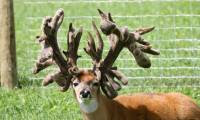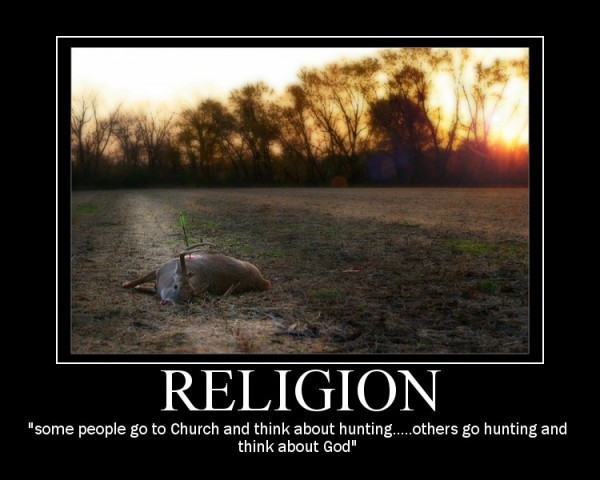 Nice gamelands deer taken with Up-close Outfitters in Western NC.
Nice gamelands deer taken with Up-close Outfitters in Western NC.I meant to elaborate more in part 1 of this write up. However I didnt because it was getting late and I couldnt really think well. To sum up what we talked about, I believe, according to the numbers, there are more mature trophy class bucks in North Carolina then the state gets credit for.I suppose that depends on your definition of a trophy buck though. I think mine is a mature buck with a rack of around 120 inches or better. I believe we are slowly becoming a sleeper state when it comes to hunting the big boys. Give it 5, maybe 10 years and more people will begin to realize there is some great hunting to be found right here. Certain areas of the state have produced bigger bucks for many years, other areas have produced spikes and forkies(I made that word up) at best.If the current trends continue,I expect to see a more even spread of good bucks throughout most areas.This is due to hunters becoming more concerned with deer management, since humans are now the single biggest factor involved in controling the deer population. In the mean time,lets find the good bucks now.Here is what I plan to do. Since most of the deer killed by hunters are taken with rifles in NC, I plan to bow hunt more early season,(I like to bow hunt all the time) and not give up late in the season when everyone else has. Concentrating on early and late season will set you apart from most of the other hunters.The goal is to be hunting unpressured deer,or to find the pressured deer. While you may not think this is possible on public land, I know it is. Sure I will hunt during the rut,but it wont be my bread and butter. NCWRC has outstanding resources for studying when and where to hunt. The 1.8 million acres of game lands covers most, if not all regions and habitats of the state. Some places are only accessible through lottery, most are open to all. Our state is divided into 17 river basins.A map of this is available at the NCWRC website. Study the river basins around the areas you choose to hunt. What vegitation/crops are prevelant? What is the make up of the land? Usually areas deer travel can be located on a property with the use of a topographic map. These are easy to obtain.There are many websites online that allow you to customize a topographic map.It usually costs around $10 dollars. What is the deer population density, harvest history? What types of hunting are allowed(dogs or no dogs)? Get to know your area, scout out places in the spring and summer.Take note of wind direction every time out.Shed hunt, I am currently trying to train Brewer to find shed antlers. All of this does not take as much time as it may sound like. A couple afternoons of scouting a month is it. Get out and turkey hunt, or small game hunt a day or two. Deer learn to pattern hunters, how we enter and exit a piece of land, where we choose to hunt.If you pay attention, you will notice that most hunters flock to the same spots on any given property. Take advantage of this, come up with alternate routes, find new areas off the beaten path.I read an article a while back that said something like 80 or 90 percent of hunters dont go further then 1/4 mile from their vehicle.Venture just a little further. By doing these things you will continue to set your self apart from other hunters and increase your odds of finding the big boy.




No comments:
Post a Comment